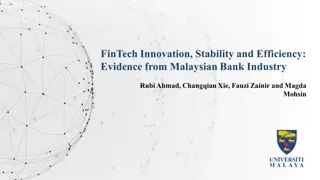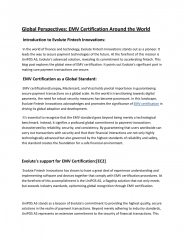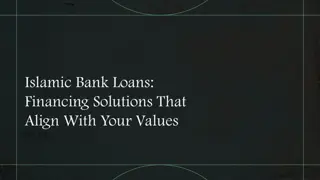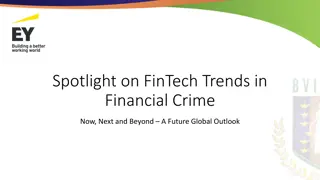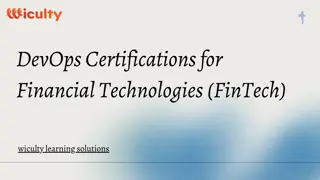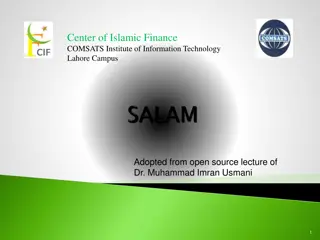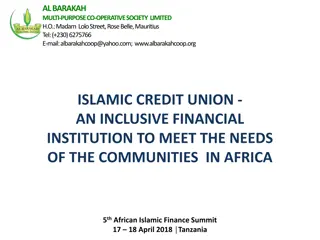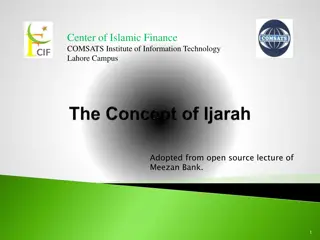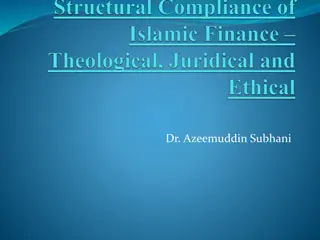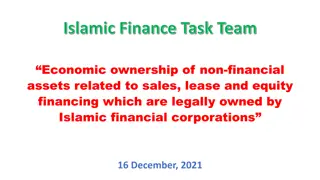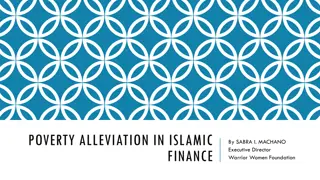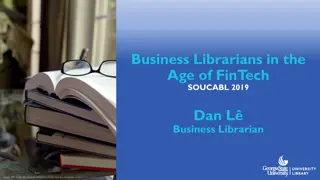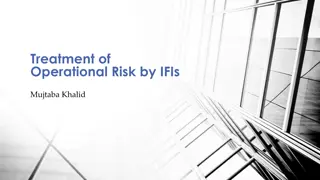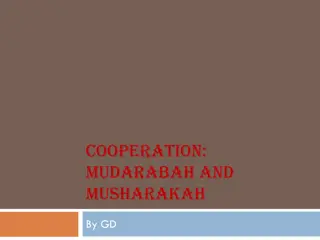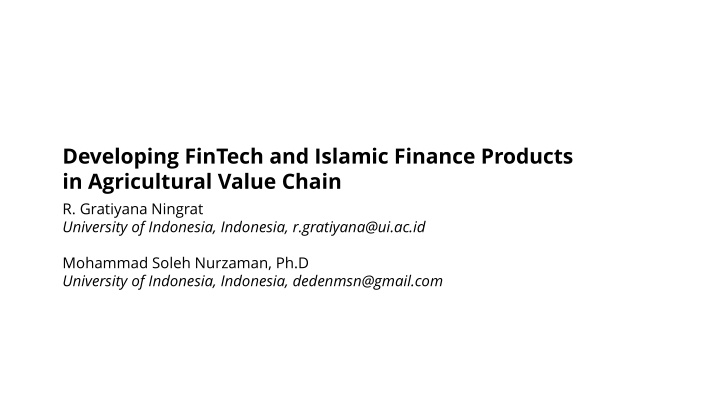
FinTech and Islamic Finance Solutions for Agricultural Value Chain Financing
Explore the integration of FinTech and Islamic finance to revolutionize agricultural value chain financing, benefiting smallholder farmers and promoting sustainable economic development in Indonesia. Discover innovative approaches and solutions in this in-depth study.
Download Presentation

Please find below an Image/Link to download the presentation.
The content on the website is provided AS IS for your information and personal use only. It may not be sold, licensed, or shared on other websites without obtaining consent from the author. If you encounter any issues during the download, it is possible that the publisher has removed the file from their server.
You are allowed to download the files provided on this website for personal or commercial use, subject to the condition that they are used lawfully. All files are the property of their respective owners.
The content on the website is provided AS IS for your information and personal use only. It may not be sold, licensed, or shared on other websites without obtaining consent from the author.
E N D
Presentation Transcript
Developing FinTech and Islamic Finance Products in Agricultural Value Chain R. Gratiyana Ningrat University of Indonesia, Indonesia, r.gratiyana@ui.ac.id Mohammad Soleh Nurzaman, Ph.D University of Indonesia, Indonesia, dedenmsn@gmail.com
The purpose of the study To propose a sharia compliant community based and institutional financing with FinTech enabled which integrating all actors (suppliers, farmers, brokers, retailers, investor, institutions) into an Islamic value chain financing. By Dominica Roseclay By Dominica Roseclay
Rural market program 1st Sample A multi-year public private partnership in agriculture rural market development which established since 2013 Adopts a market system development and agricultural value chain finance approach Aiming to benefit one million smallholder farming households in eastern Indonesia. Crowde Agri- FinTech 2nd Sample - - Crowde, an ecosystem builder for digitizing agricultural process from upstream to downstream through peer- to-peer lending mechanism established since 2015. Crowde has disbursed fund to 10,000 farmers mostly in West of Indonesia from 22,400 lenders in 2018. - - -
Methodology Case Study Why agricultural value chain finance approach? How is the agricultural value chain finance practice in the market? What are current AVCF products and how is the transaction? 1. Data Collection. Krippendorff (2004), Yin (2014) & (Lincoln & Guba, 1985) 2. Coding and Data Analysis. Krippendorff (2004) Figure 1. Case Study Analysis Process by Authors
By Snapwire By Snapwire Problems How Islamic finance give solution to agricultural value chain financing in FinTech enabled platform?
The smallholder farmers linking into three different market segment. Source: Compiled by Authors , 2019 Figure 2.Segmented Agriculture s Value Chain Finance
Internal financing between actors already happened in form of traditional supply chain. Source: Compiled by Authors , 2019 Figure 3. Common Value Chain Financing Mechanism
Major Findings Development Program To build market system in AVCF, they find the strongest actors, less risk, and have social value based driven to build a partnership (Miller & Jones, 2010). All financial products are using conventional loan, where the farmers can be disadvantaged by loan shark (Sugema, Bakhtiar, & Effendi, 2010). The credit scoring process is still acquired manually from value chain actors memory or unstandardized paper notes. - - -
Crowde have field officer to ensure the external financing process. Source: Crowde, 2018 Figure 4. FinTech Enabled Platform in Agriculture
In the process of integrating data from input supplier, farmer, and off taker. See pg. 9 The credit scoring process is still acquired manually from value chain actors memory or unstandardized paper notes. Source: Compiled by Authors , 2019 Figure 5. Data Flows in FinTech Enabled Platform
A gap to provide access to finance to the low market segment. Recently developing Islamic financing product, but still low adoption from farmers side
AVCF-IF Platform Source: Compiled by Authors , 2019 Figure 6.Islamic Agriculture s Value Chain Finance Products with FinTech Enabled Platform
Policy Implications (1)Determining behavioral intention for AVCF Islamic FinTech products. (2)Development of technology support and architecture. (Lynn et al., 2019). (3)Partnership establishment of extension services and support entities. (OECD, 2018; Rode et al., 2019).
Conclusion and Recommendation 1. This study emphasizes in the era of Fourth Industrial Revolution; digital technologies can be the solution to emerging social problems and one of them is agriculture and undoubtedly essentials to spur its growth and sustainable development. 2. This study suggest that Islamic finance can contribute its financial development to all market segmentation and value chain actors from various fund sources and stakeholders. 3. Additionally, determining buying intention, partnership establishment, and technology infrastructure are pivotal for its future implementation.
Q&A Thank you for your attention!

